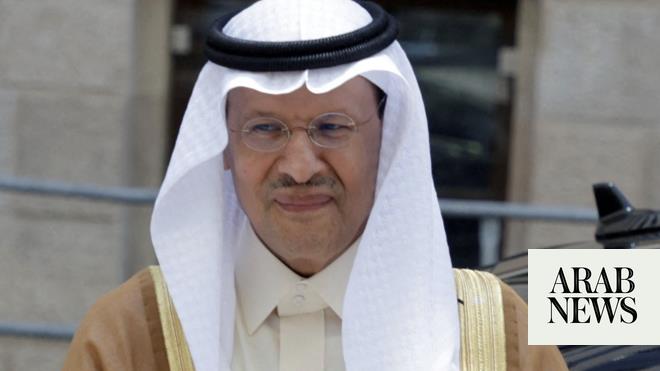
The world’s largest oil producers are inching closer to an unprecedented global deal to rescue the energy industry from collapse after the US said production will drop dramatically.
While the forecast reflects what President Donald Trump has called an “automatic” reduction by US explorers, not a commitment from the world’s top producer, it helps pave the way for Saudi Arabia and Russia to coordinate output cuts at Thursday’s virtual OPEC+ meeting. On Friday, they’ll seek cooperation from other nations in a Group of 20 conference.
Their actions will determine whether the world continues to drown in a flood of oil that’s starting to overwhelm storage tanks and force a wave of abrupt production shutdowns at a time when the COVID-19 pandemic is destroying demand. Concerns that coordinated output cuts may not be enough to clear a global supply glut sent US oil futures tumbling 9 percent on Tuesday, but failure to reach an agreement could plunge prices much lower.
A deal hinges on some form of cooperation with America, according to delegates involved in the talks. The production drop forecast by the US government on Tuesday could be enough to satisfy Saudi Arabia and Russia. Trump said in an interview with Fox News on Tuesday night in the US that he’s spoken to the Russian and Saudi leaders about the negotiations and that “it’s all going to work out.”
The US Energy Information Administration slashed its oil output forecast by almost 10 percent, saying it now expects the nation to pump an average of 11.8 million barrels a day in 2020, and just over 11 million next year. The country is currently producing 13 million barrels a day. The production drop forecast by the US government on Tuesday could be enough to satisfy Saudi Arabia and Russia.
The report demonstrates that there are already projected cuts of 2 million barrels a day, without any intervention from the federal government, an official at the Energy Department said.
“I think there is already an understanding between Saudi Arabia, Russia and the US,” Ed Morse, head of global commodities at Citigroup Inc., said before the American production estimate was cut. “The US is a party to the agreement, in effect, because the price of oil is already reducing drilling activity to an extent that production will likely be down 1 million barrels a day by the end of the third quarter.”
Directly mandating production curtailments in a deal with the cartel that he’s vilified for years would not only be politically challenging for Trump, but also hard to do in a free-market economy with thousands of producers. But the collapse in crude prices to 18-year lows has triggered deep reductions in US drilling that mean a drop in production is inevitable.
“Nobody’s asked me, so if they ask I’ll make a decision,” Trump said on whether the US would participate in cutbacks. American producers are “already cutting back and they’re cutting back very seriously. I think it’s happening automatically.”Virtual meetings
The Organization of Petroleum Exporting Countries and its allies are set to meet by video link at 4 p.m. Vienna time on April 9.
Whatever emerges from those talks could depend on what happens next. At the virtual meeting of G20 energy ministers the following day, the US, Canada and Brazil will have the opportunity to show how they’ll contribute to curtailing the global oil surplus. The video conference is scheduled to start at 3 p.m. Riyadh time and last for about 2 1/2 hours, according to a diplomat involved.
Brazil’s Petrobras is paring production by 200,000 barrels a day. Alberta, the Canadian province that holds the world’s third-largest crude reserves, already has output curtailment measures in place. Both the province and the Canadian federal government plan to take part in the discussions.Global deal
A final global deal could reduce supplies by 10 million barrels a day or more, a level Trump first invoked last week.
A report prepared for OPEC members ahead of their meeting considers such a cut to the end of this year, according to a delegate. But the analysis also considers a no-cut option, the delegate said.
However, even a cut by 10 million barrels a day may only dent the supply glut caused by the lockdown of billions of people around the world to slow the spread of the virus, which is estimated to have reduced demand by as much as 35 million barrels a day.
The EIA forecasts a global supply surplus of 11.4 million barrels a day in the second quarter. The OPEC analysis shows global demand falling 11.9 million barrels a day in the quarter, the delegate said.
“Even if a fudge can be found, some very creative maths is required to deliver the desired headline cut figure,” said Amrita Sen, chief oil analyst at consultant Energy Aspects Ltd. “We struggle to see how we get to 10 million barrels a day of actual production cuts, even using inflated April baseline numbers.”
Plus, US shale is ailing but it’s far from dead. While some explorers like Whiting Petroleum Corp. have gone under, Exxon Mobil Corp. still expects its production in the Permian Basin of West Texas and New Mexico to rise, even after slashing $10 billion in spending. And like after the 2014-2016 oil crash, the most efficient explorers might come back to haunt OPEC again in the future with rapid production growth.
Meanwhile, the top two oil-exporting countries still had disagreements to settle. Russia so far has favored using an average of the first quarter output as the baseline from which to cut production, while Saudi Arabia wants to use its current April production, according to people familiar with the discussions. The difference is huge: the kingdom pumped 9.8 million barrels a day on average between January and March. In April – as it unleashed a shock and awe price war against its former ally – it’s been pumping more than 12 million barrels a day.
Given the severity of the breakdown in Saudi-Russia relations after the failure of OPEC+ talks in March, getting all sides back to the table constitutes an achievement in itself. It has required a whirl of international diplomacy to overcome the mutual recriminations over who’s to blame for the industry’s crisis.Trading barbs
After Trump first spoke about the prospect of a deal on Friday, Moscow and Riyadh traded barbs about who started a price war that is dumping even more unwanted crude onto world markets. A “productive discussion” between US Energy Secretary Dan Brouillette with his Saudi counterpart Prince Abdulaziz bin Salman appeared to move the process forward.
Brent crude futures have rebounded by almost 30 percent since Trump first floated the idea of Saudi and Russian production cuts in a tweet on Thursday, and traded above $30 a barrel in London on Tuesday. But prices are still down by more than 50 percent for the year. In the US, West Texas Intermediate crude is down 60 percent year-to-date, at less than $25 a barrel.
The market for actual barrels of crude is still weak because of the large oversupply. Prices have already turned negative in some corners of the world, and traders have been putting oil into tankers at a record pace to store it at sea.
Read more:
US slashes oil production forecast for 2020 by more than one million barrels per day
US pushes back on OPEC+ call to join oil output cuts
G20 energy ministers to meet as oil crashes amid supply glut, coronavirus
اي استفسار أو طلب خاص بخصوص التوظيف يمكنك التواصل مع الابميل التالي – مجير الموقع :
alturky28@gmail.com
لطلبات التصميم او البرمجة التواصل مع :
hamzalaabar@gmail.com











